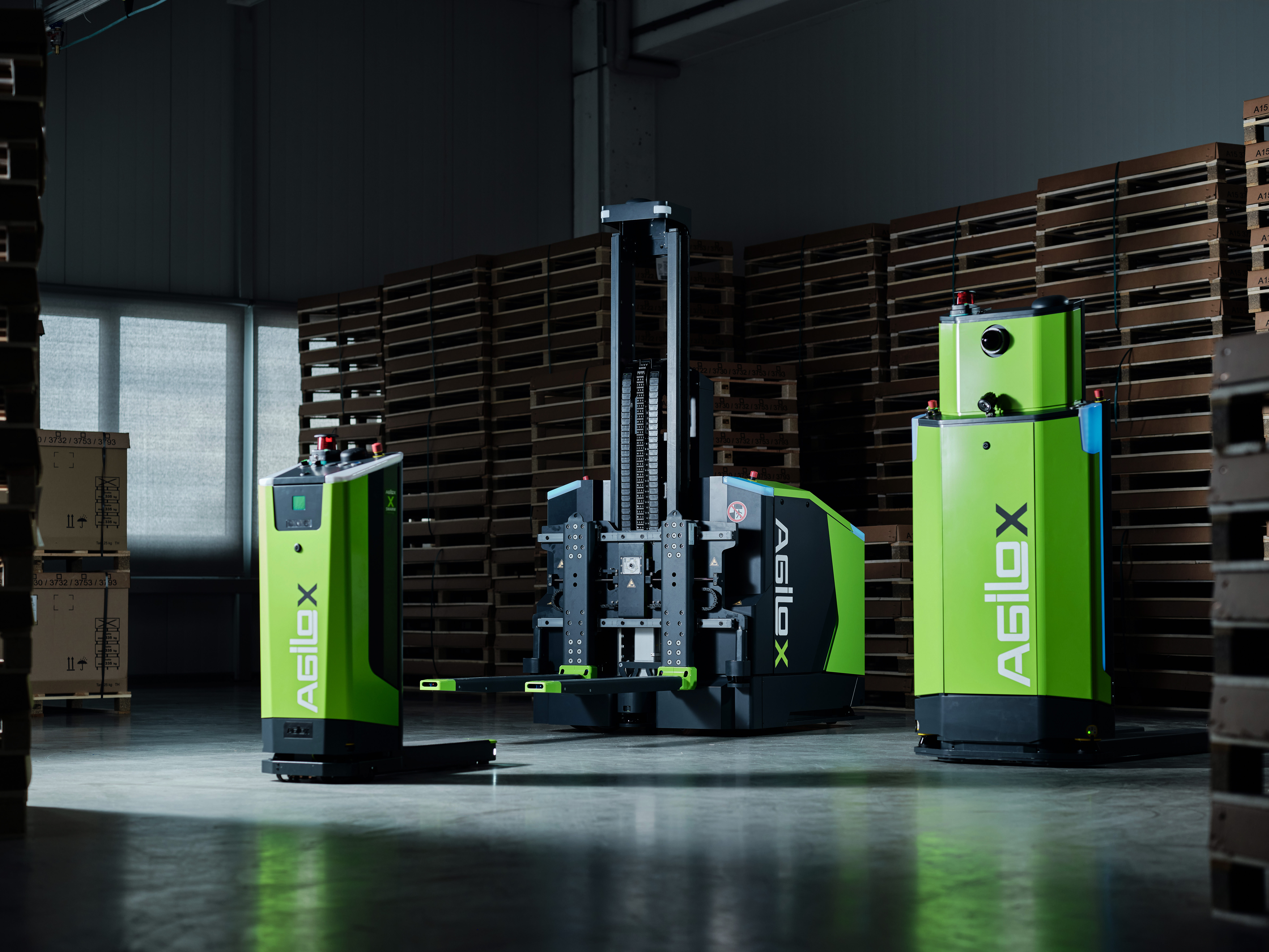One look at the technological developments in the field of automated transport logistics and their potential for savings and increases, as well as at your competitors who have already invested in innovative intralogistics solutions or are in the process of upgrading accordingly, is enough to see that there is no way around the automation of intralogistics if you want to remain competitive in the future too.
Here is a clear summary of why this is the case:
One thing in advance: The advantages associated with the automation of intralogistics are much more diverse than one would assume at first glance and extend far beyond the "transport of goods from A to B".
Which different solution approaches can be distinguished in the automation of intra- and transport logistics
A distinction is made in automation between inflexible systems such as assembly lines and flexible solutions, so-called AGVs ("Automated Guided Vehicles"). The latter are in turn differentiated according to whether they are automatically controlled vehicles or autonomously acting transport vehicles - in short: AMRs ("Autonomous Mobile Robots").
In the case of automatically controlled vehicles, the transport routes run along virtual or physical guidelines. The vehicles are therefore bound to predefined paths, which further means that they are limited in terms of flexibility and must be adapted with correspondingly high effort in the event of fundamental changes. In contrast, autonomously operating AMRs can determine their own path to the destination and correct it if necessary. This makes them incomparably more flexible in use. In addition, they can be adapted to changing basic structures without major complications.
What automated transport systems are used for
In general, automated intralogistics solutions are used to relieve your employees of monotonous and low-value-added, but especially, dangerous and/or physically demanding tasks and to ensure the greatest possible efficiency regarding the storage and delivery of goods.
Automated transport systems thus take over basic logistics processes that would otherwise have to be carried out by your personnel, thus providing far-reaching benefits for your employees and your company.
The aspect of "safety" plays a vital role here, as it is also responsible - directly or indirectly - for all other benefits.
Fewer accidents. Less sick leave.
Potentially dangerous and physically demanding work is always associated with an increased probability of accidents and the risk of physical wear and tear, as well as a correspondingly high level of mental stress. In contrast, the introduction of automated or autonomous intralogistics systems leads in this respect to an immediate and significant increase in safety standards and thus to minimization of accidents or other sickness-related absences.
Higher safety standards. Greater attractiveness.
Ensuring the highest possible level of in-house safety has a direct positive impact on the attractiveness of the jobs concerned and thus on you as an employer. As a result, fluctuations within the workforce or vacancies caused by health-related absences, resignations or retirements can be quickly rectified and filled without the need for long-term recruiting.
In addition, maximum safety standards and the resulting greater satisfaction among your logistics employees minimize turnover![]() and the otherwise necessary investment in ongoing training in favor of long-term employment relationships.
and the otherwise necessary investment in ongoing training in favor of long-term employment relationships.
Higher efficiency
Automated intralogistics solutions also mean a significant increase in efficiency. This results not only from the increased satisfaction of your employees, but in particular from the fact that automated and autonomous intralogistics systems can be used in continuous operation 24/7 - without fluctuations or quality losses.
This stable and continuous material flow makes the entire logistics in your company more plannable, reliable, and scalable, which means nothing less than an immediate and measurable increase in efficiency.
More flexibility
Whether minimal or drastic, changes and adjustments to production lines and warehouse structures always have an impact on intralogistics. As you yourself know very well, flexibility and adaptability are factors that decisively determine whether your operation is perceived as contemporary, innovative, and vital. The reputation of your brand thus has an enormous impact on whether existing customers stay and new customers approach you. Those who can react quickly to new developments, trends, or innovations and/or drive them themselves have a substantial market advantage in a rapidly changing world.
In such situations, autonomous and flexible logistics solutions are a big step ahead of inflexible systems.
When using autonomous mobile robots from the Austrian company AGILOX, for example, it would suffice in such cases to steer a single AGILOX-AMR through the warehouse or production hall via smartphone. In doing so, the robot creates a virtual plan of the current room situation. It is then assigned the task processes, while the other AGILOX-AMRs in the fleet receive a "mirror image" of its records and are immediately ready for action without any further effort.
Cost savings
It cannot be overlooked that:
- maximum safety standards,
- greater efficiency,
- increased attractiveness as an employer,
- greater flexibility with optimized use of space, and
- lower fluctuation rates and
- less sick leave
are accompanied by significant cost savings on both the production and personnel sides.
With automation, you thus benefit in every respect and at all operational levels of intralogistics.
Or in other words: automation is an investment in the future. In the future of new and changing markets. In the future of your existing employees and future generations. And thus, in the future of your company.


